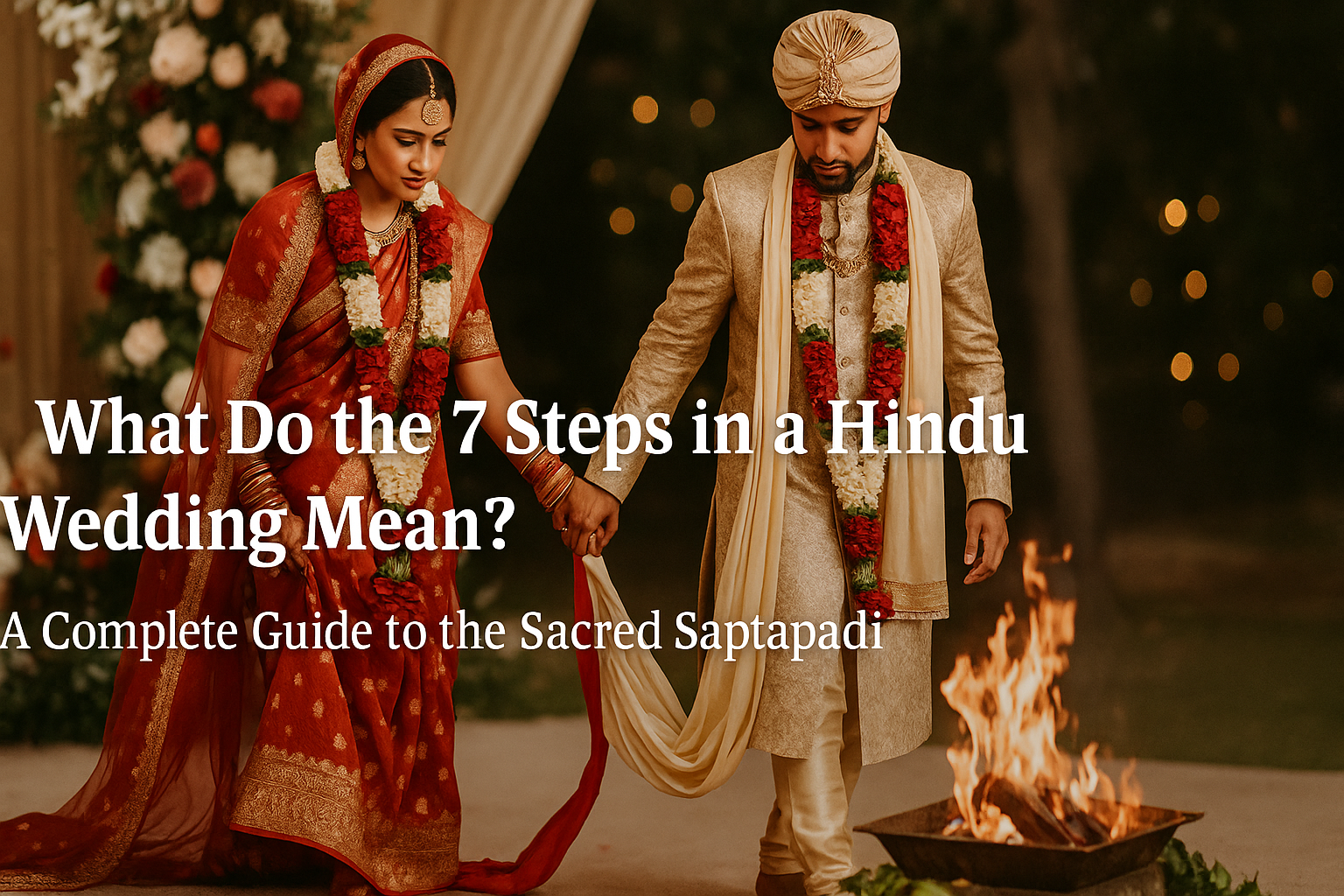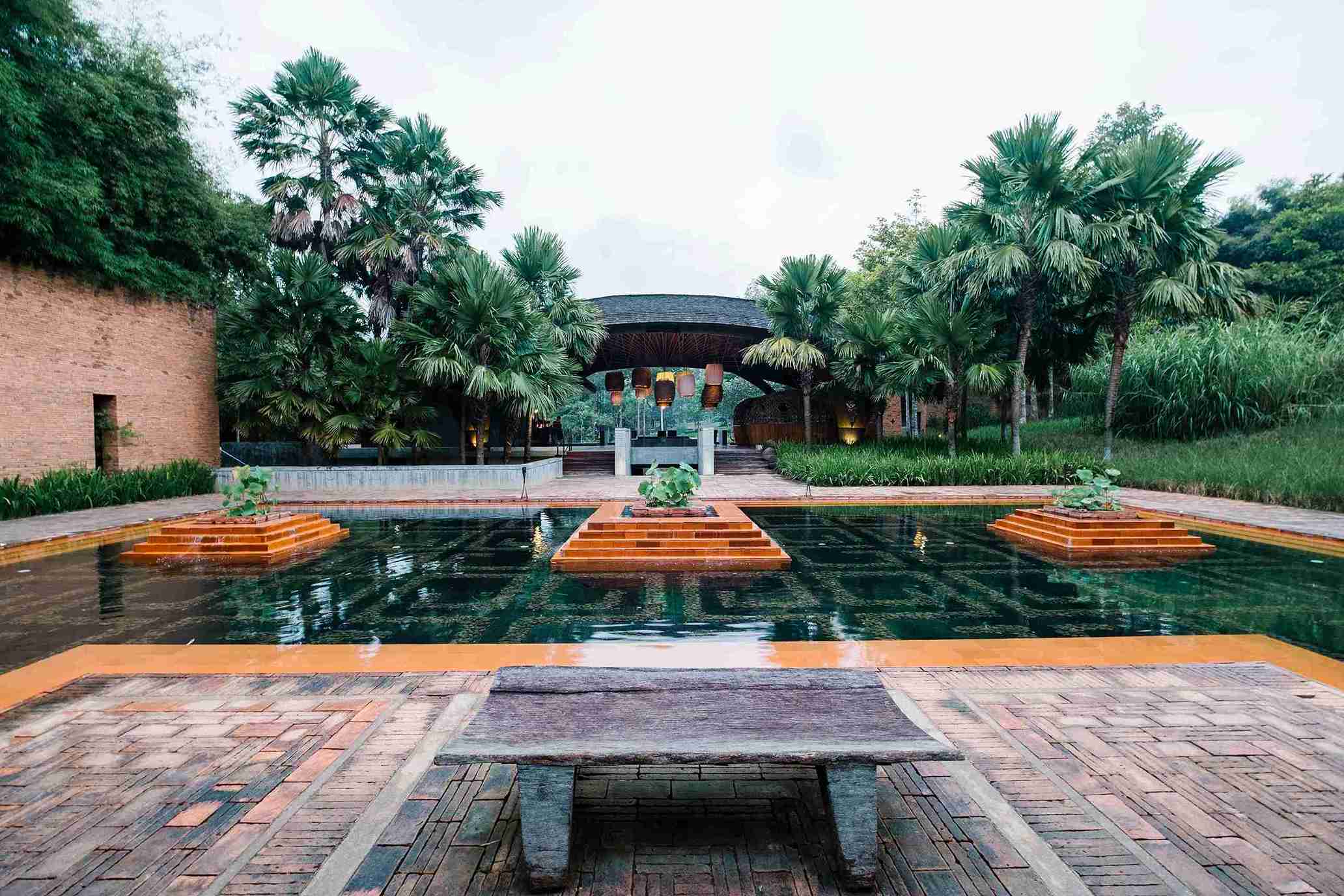
When it comes to Hindu weddings, few moments are as emotionally charged and spiritually significant as the Saptapadi — the Seven Steps. Taken before the sacred fire, these steps are more than just physical movements; they’re symbolic milestones that mark the beginning of a shared life filled with love, trust, and duty.
In Sanskrit, “Saptapadi” means “seven steps” (sapta = seven, padi = steps). As the bride and groom take these steps around the sacred fire (Agni), they recite vows to one another — promises that go far beyond the festivities of the wedding day. These vows form the moral, spiritual, and emotional foundation of a Hindu marriage.
🌺 What is the Meaning of Saptapadi? Why is it So Important?
The Saptapadi is considered the most binding and sacred part of the Hindu wedding ceremony. According to ancient Vedic traditions, a marriage becomes legally and spiritually complete only after the couple takes these seven steps together. Some Hindu communities even consider the couple as officially married after the seventh step is taken, not before. This ritual remains a timeless element across various wedding themes in India, symbolizing unity and commitment.
It is during these steps that the couple acknowledges the responsibilities of a shared life: supporting each other, nurturing a family, building a home, and walking together through joy, sorrow, and spiritual growth.
What are the 7 vows of marriage: Meaning of Each Step
Let’s walk through each of the seven sacred steps and what they truly represent in a Hindu marriage:
Step 1: Nourishment and Provision
The first step is a vow for food, health, and physical well-being. The couple promises to provide for one another and live a life free of hunger, both physical and emotional.
🕊 “Let us walk together to provide nourishment and strength for each other.”
Step 2: Strength and Endurance
Here, they seek strength of mind, body, and spirit, committing to stand by each other through life’s challenges and triumphs.
🕊 “Let us walk together to develop our strength and face life’s trials with courage.”
Step 3: Prosperity and Wealth
The third step is for material prosperity and shared success. The couple pledges to grow wealth ethically and live a life of dignity and gratitude.
🕊 “Let us walk together to earn and manage our resources wisely and responsibly.”
Step 4: Love and Family Harmony
This vow reflects the hope for mutual love, understanding, and family unity. They promise to build a home filled with trust and affection.
🕊 “Let us walk together to maintain harmony and love in our family life.”
Step 5: Progeny and Care for Future Generations
The fifth step is for raising children, nurturing them with love, and guiding them with values, wisdom, and knowledge.
🕊 “Let us walk together to raise strong, virtuous children and guide them with love.”
Step 6: Longevity and Health
This vow seeks long life and companionship. It’s a prayer for mutual well-being and a lifelong bond that matures with time.
🕊 “Let us walk together to live long, healthy lives, filled with friendship and mutual respect.”
Step 7: Loyalty, Friendship, and Spiritual Unity
The final step is the most emotional — a promise of eternal friendship, loyalty, and spiritual growth. It unites the couple not just as partners, but as soulmates.
🕊 “Let us walk together in loyalty and love, united in mind, heart, and soul.”
Make your wedding meaningful – Call now for a personalized consultation! +919740492288
🕯 The Sacred Fire (Agni) – The Divine Witness
All of this takes place before the sacred fire, or Agni, which is not just symbolic but divine. In Hindu belief, fire is one of the five essential elements of life and represents purity, transformation, and divine energy. The couple walks around it as a sign that their vows are made before God and nature.
🌍 Regional and Cultural Variations
While the essence of Saptapadi remains constant, different parts of India and various communities add their own cultural flavor:
- In South Indian weddings, the Saptapadi may involve tying the sari and walking around the fire or taking seven symbolic steps with the groom holding the bride’s toe with a ring.
- In Maharashtrian weddings, the ritual is known as Saat Phere (seven rounds), where the bride and groom circle the sacred fire seven times instead of taking seven distinct steps.
- In Punjabi or Sikh weddings, the number of rounds is usually four (called Laavan), but the spiritual unity theme remains strong.
These differences reflect the rich diversity of Indian culture, yet all honor the same foundational principles of unity, respect, and spiritual bonding.
💫 More Than Tradition: A Modern-Day Reflection
Today, many modern couples revisit the meaning of these seven vows and personalize them. Some may write their own promises inspired by the Saptapadi or blend it with contemporary elements like vow exchanges or love letters. The goal is still the same: to enter marriage with intention, mindfulness, and love.
What makes the Saptapadi timeless is its universal relevance — the values of trust, partnership, shared growth, and love are essential to any relationship, no matter the era or culture.
Planning a Hindu wedding? DM us now for expert cultural support! +919740492288
💖 Final Thought: Walking Into Forever
The beauty of the Saptapadi lies not just in the words spoken, but in the heartfelt promise of walking side by side — today, tomorrow, and beyond. It is a spiritual journey, a bond of love and duty, and a public declaration that “we’re in this together.”
Whether you’re getting married, attending a Hindu wedding, or simply learning about cultural traditions, understanding the meaning behind the seven steps gives you a deeper appreciation of the sacred, emotional, and symbolic richness of Indian weddings.
